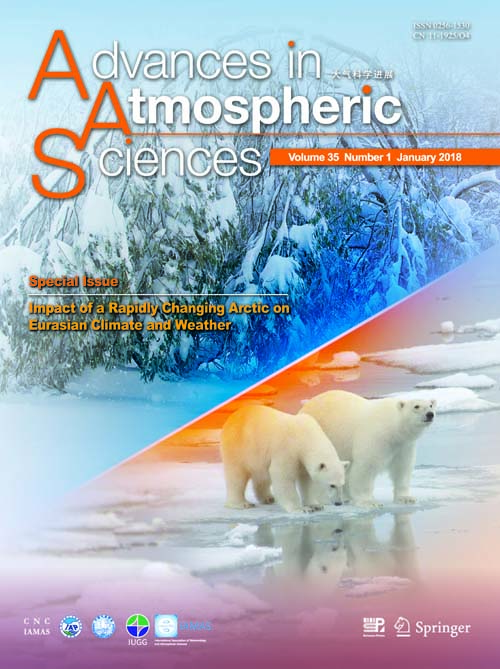
There’s controversy in climate change research about how the evidence is gathered and used to inform predictions.
 |
| The special issue of Advances in Atmospheric Sciences (AAS), entitled “Impact of a Rapidly Changing Arctic on Eurasian Climate and Weather” (Image by AAS) |
To help bring convergence to the field and potentially accelerate action, a special issue of the Advances in Atmospheric Sciences, an international journal sponsored by the Institute of Atmospheric Physics (IAP) of the Chinese Academy of Sciences and published by Springer, highlights the recent scientific work.
“Our understanding of Arctic-midlatitude linkages is still at a pre-consensus stage,” said Thomas Jung, a professor of climate dynamics at the Alfred Wegener Institute Helmholtz Centre for Polar and Marine Research in Bremerhaven, Germany. “It is important to bring together the latest research results.”
Titled “Towards improving understanding and prediction of Arctic change and its linkage with Eurasian mid-latitude weather and climate” or “Impact of a Rapidly Changing Arctic on Eurasian Climate and Weather” for short, the special issue focuses on understanding how changes in the Arctic influence the mid-latitude regions of the globe.
While the increased near-surface temperature of the Arctic and the significantly decreased sea ice are undisputed facts, the link between such changes and the extreme climate and weather events in the mid-latitudes is still debated.
“The results published in the journal further present where divergence occurs,” said chief editor of the special issue and preface co-author ZHANG Xiangdong, a professor at the International Arctic Research Center at the University of Alaska Fairbanks in the United States.
The special issue includes observational results and modeling work on the problem of Arctic and Eurasian climate links, yet the work does not clarify the correlation.
According to ZHANG, progress includes the use of different prediction models, an increased data sample size with the help of coupled model simulations, as well as more focus on regional linkages.
"An important aspect of this special issue is that the problem is considered from different perspectives, including weather prediction. The research presented in this special issue was carried out during what we call the preparation phase of the Year of Polar Prediction,” said Jung, who also chairs the Year of Polar Prediction.
“It will have a significant influence on the research activities during the core phase, which started in May of this year and will run until June 2019." Jung added.
The global initiative, under the guidance of the World Weather Research Programme, aims to support collaborative research that will lead to better climate and weather predictions.

86-10-68597521 (day)
86-10-68597289 (night)

86-10-68511095 (day)
86-10-68512458 (night)

cas_en@cas.cn

52 Sanlihe Rd., Xicheng District,
Beijing, China (100864)

